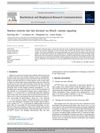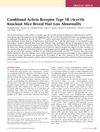In This Issue
May 2000
in “
Journal of Investigative Dermatology
”
TLDR Hedgehog signaling is crucial for hair development, cadherins affect cell adhesion, neutrophils play a role in skin lesions, and BP230 autoantibodies impact skin stability.
The document discussed several studies, including one by Wang et al., which explored the role of the hedgehog signaling pathway in hair development. They used antihedgehog blocking monoclonal antibodies on mice, resulting in a reversible hairless phenotype, demonstrating the pathway's role in both embryonic hair follicle development and hair cycles in young and adult animals. This provided a model for studying hair regeneration. Another study by Lenox et al. investigated the synergistic roles of cadherins in epithelial cell adhesion, revealing that the loss of P-cadherin exacerbated the Dsg3–/– phenotype, leading to severe oral lesions and early death in double mutant mice. Schön et al. provided direct evidence of neutrophils' role in psoriasiform lesions in flaky skin mice, showing that neutrophil depletion alleviated symptoms, suggesting potential therapeutic benefits for human skin disorders. Lastly, Skaria et al. identified immunodominant sequences in BP230, contributing to understanding bullous pemphigoid pathogenesis by showing that autoantibodies interfere with BP230's function, affecting hemidesmosome stability.



